Tanzania National Parks
|
Sparrow Tours & Safaris Ltd
Udzungwa mountains National Park
 This is a Primeval almost unearthly, with rampant and verdant growth. An absolutely enchanted forest of leafy glades freckled with sunshine, where lichen, moss, ferns and fungus grow and ingratiate themselves into every damp crevice. It is a hothouse nurturing species found nowhere else on earth, a secret bank account of precious genetic stock. Among its six types of primate, two are endemic-the IRINGA RED COLUBUS MONKEY and the SANJE CRESTED MANGABEY, not detected until 1979.The four previously known birds, including the RUFOUS-WINGED SUNBIRD and the new species of the PATRIDGE-LIKE FRANCOLIN, make this park he Tanzania's richest forest bird habitat and among the three most important bird conservation areas on the continent. Udzungwa is made for hiking and climbing with trails through the rainforest and escarpment. The natural penthouse like plateau, with sugar plantations against some patchwork of grassland and moutain forest extending over 100 kms. But the core of the beauty is the SANJE RIVER where it reinvents itself as a spectacular waterfall plunging 170 meters through the rain forest to land in a spray of mist in the valley below.
This is a Primeval almost unearthly, with rampant and verdant growth. An absolutely enchanted forest of leafy glades freckled with sunshine, where lichen, moss, ferns and fungus grow and ingratiate themselves into every damp crevice. It is a hothouse nurturing species found nowhere else on earth, a secret bank account of precious genetic stock. Among its six types of primate, two are endemic-the IRINGA RED COLUBUS MONKEY and the SANJE CRESTED MANGABEY, not detected until 1979.The four previously known birds, including the RUFOUS-WINGED SUNBIRD and the new species of the PATRIDGE-LIKE FRANCOLIN, make this park he Tanzania's richest forest bird habitat and among the three most important bird conservation areas on the continent. Udzungwa is made for hiking and climbing with trails through the rainforest and escarpment. The natural penthouse like plateau, with sugar plantations against some patchwork of grassland and moutain forest extending over 100 kms. But the core of the beauty is the SANJE RIVER where it reinvents itself as a spectacular waterfall plunging 170 meters through the rain forest to land in a spray of mist in the valley below.
Location: This park is located 348 kms - 215 miles from Dar-es-Salaam, and 65 kms - 40 miles southwest of Mikumi national park
Size: Covering an area of about 1,990 sq.kms about 1,240 sq.miles.
How to go there: Comfortable drive from Dar-es-Salaam or Mikumi National Park
To do: Easy 2-hour hike to the waterfall to camping safaris, combining with nearby Mikumi or en-route to Ruaha National Park.
Best time: All year around although it is slippery in the wet season. June-October is dry, before the short rains, but get ready for rain anytime.
|
|
|
|
Mahale mountains National Park
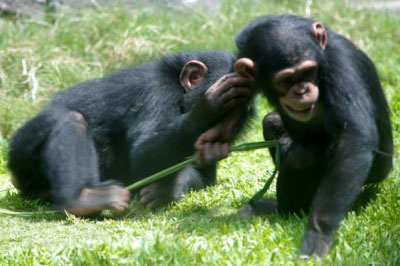 Like it's northerly neighbor, Gombe, the Mahale mountains are home to some of the last remaining wild chimps in Africa. The area also known as NKUNGWE- named after the park's massive mountain, standing at 2,460[8,069 feet a.s.l] it is the highest of the six prominent points that make up the mountain range which runs down the Mahale promontory, along side Lake Tanganyika. In this park you can also trace the TONGWE PEOLPE'S ancient pilgrimage to the mountain spirits, hiking through enclaves of rain forests to grassy ridges chequered with alpine bamboo. From here returning to the lake to plunge into the clear waters, home to more than 250 unique species of fish, then return as you came, by boat.
Like it's northerly neighbor, Gombe, the Mahale mountains are home to some of the last remaining wild chimps in Africa. The area also known as NKUNGWE- named after the park's massive mountain, standing at 2,460[8,069 feet a.s.l] it is the highest of the six prominent points that make up the mountain range which runs down the Mahale promontory, along side Lake Tanganyika. In this park you can also trace the TONGWE PEOLPE'S ancient pilgrimage to the mountain spirits, hiking through enclaves of rain forests to grassy ridges chequered with alpine bamboo. From here returning to the lake to plunge into the clear waters, home to more than 250 unique species of fish, then return as you came, by boat.
Location: This park is located in the western side of Tanzania, bordering Lake Tanganyika.
Size: This park occupies an area of about 1,613 sq.kms [about 1,000 sq.miles]
How to go there: Chartered flights from Arusha, Dar or Kigoma, then charter boat services from Kigoma. There is a weakly steamer from Kigoma which will take you 7 hours, then hire a local fishing boat or you can arrange with the park HQs for pick-up in park boat to take you another 1-2 hours to the park.
To do: Chimp tracking you have to give yourself an allowance of about 2 days, hiking, camping safaris, snorkeling, fish for your dinner.
Best time: May-October, which is the dry season for forest walks, although there is no problem in the light rains of October/November.
|
|
|
|
Tarangire National Park
 Yes, day after day of cloudless skies, the sun sucks the moisture from the landscape, baking the earth a dusty red, the withered grass as bristle as straw, this is ''Tarangire National Park'' Herds of up to 300 elephants scratch the parched Tarangire river for underground streams while migratory wildebeest, zebra, buffalo, gazelle, hartebeest, eland and oryx crowds the shrinking lagoons. This is a perfect smorgasbord for predators-the greatest concentration of wildlife outside the Serengeti ecosystem. The swamps, tinged green year around, are the focus for the 550 bird varieties, the most breeding species in one habitat anywhere in the world. KORI BUSTARDS [the heaviest flying bird] GROUND HORNBILLS that bluster like turkeys will be found on drier GROUND. Tarangire PYTHORNS climb trees, as do its lions and leopards, lounging in the branches where the fruit of the SAUSAGE TREE disguises the twitch of a tail.
Yes, day after day of cloudless skies, the sun sucks the moisture from the landscape, baking the earth a dusty red, the withered grass as bristle as straw, this is ''Tarangire National Park'' Herds of up to 300 elephants scratch the parched Tarangire river for underground streams while migratory wildebeest, zebra, buffalo, gazelle, hartebeest, eland and oryx crowds the shrinking lagoons. This is a perfect smorgasbord for predators-the greatest concentration of wildlife outside the Serengeti ecosystem. The swamps, tinged green year around, are the focus for the 550 bird varieties, the most breeding species in one habitat anywhere in the world. KORI BUSTARDS [the heaviest flying bird] GROUND HORNBILLS that bluster like turkeys will be found on drier GROUND. Tarangire PYTHORNS climb trees, as do its lions and leopards, lounging in the branches where the fruit of the SAUSAGE TREE disguises the twitch of a tail.
Location: This park is located 118 kms - about 75 miles southwest of Arusha Town.
Size: This park covers an area of 2,600 sq.kms - about 1,600 sq.miles.
How to go there: Accessible easily by road from Arusha or Lake Manyara, and can continue to Ngorongoro Crater and the Serengeti. Also by charter flight from both Arusha and Serengeti.
To do: Professionally guided walking safaris, day tour to the BARABAIG TRIBE'S ancient Kolo rock paintings.
Best time: Viewing all year round, but dry season June - September for sheer number of animals.
|
|
|
|
Arusha National Park
 This park is rich tapestry of habitats teeming with fauna and avifauna. The park has three major distinct zones that attribute to its variety and beauty: the Ngurdoto Crater; the Momella Lakes; and the rocky alpine heights of Mount Meru rising to 4,566 meters [14,990 feet a.s.l] This park is a secret of many facets. In this park you can watch zebra graze on the red grasslands, dik-dik dart into scrubby bush, leopards lurk in shadowy forests, reedbuck pick through marshy pools, black and white colobus monkey riot in the damp forest mists, giraffes glide across the grassy hills and in the distance Mount KILIMANJARO watches over.
This park is rich tapestry of habitats teeming with fauna and avifauna. The park has three major distinct zones that attribute to its variety and beauty: the Ngurdoto Crater; the Momella Lakes; and the rocky alpine heights of Mount Meru rising to 4,566 meters [14,990 feet a.s.l] This park is a secret of many facets. In this park you can watch zebra graze on the red grasslands, dik-dik dart into scrubby bush, leopards lurk in shadowy forests, reedbuck pick through marshy pools, black and white colobus monkey riot in the damp forest mists, giraffes glide across the grassy hills and in the distance Mount KILIMANJARO watches over.
Location: Located in the northern Tanzania, just northeast of Arusha Town.
Size: About 137 sq.kms.
How to go there: An easy 40 minutes drive from Arusha Town and its approximately 60 kms [about 35 miles] from Kilimanjaro International Airport.
To do: Excellent forest walks, numerous picnic sites, 3or 4 days Mt. Meru climbs and best acclimatization for Mt.Kilimanjaro.
Best time: June -February is the best time to ascend, although it may rain in November. December-February is the best time for Mt.Kilimanjaro viewing.
|
|
|
|
Ruaha National Park
 Our game viewing starts he moment we touch down. A coupe of giraffe race beside the airstrip, all legs and neck yet alegant in their awkwardness line of zebra parades across the runway in their wake while protective elephants guard their young under the shade of a fat baobab tree [Adansonia digitata]. Wildlife is concentrated along the cascading Great Ruaha River that is the park's lifeblood, homing hippos and crocks snacking on schools of fish, this river is flooded torrent after the rains, dwindling to precious pools surrounded by a blinding sweep of sand in the dry season. Waterbuck [common], impala [southern], and the world's most southerly Grant's gazelle risk their lives for a sip of its waters... a permanent hunting ground for lion, leopard, jackal, hyena and packs of wild dogs [African hunting dog]- rare elsewhere. Ruaha's 8,000 resident elephants remain the largest population of any national park in East Africa, recovering strongly from ivory poaching in the eighties. Unique combinations of animals co-exist here - both the shy greater and lesser Kudu may be seen corkscrew horns gleaming like worn metal behind a camouflage of thorny thicket, sable and roan antelope.
Our game viewing starts he moment we touch down. A coupe of giraffe race beside the airstrip, all legs and neck yet alegant in their awkwardness line of zebra parades across the runway in their wake while protective elephants guard their young under the shade of a fat baobab tree [Adansonia digitata]. Wildlife is concentrated along the cascading Great Ruaha River that is the park's lifeblood, homing hippos and crocks snacking on schools of fish, this river is flooded torrent after the rains, dwindling to precious pools surrounded by a blinding sweep of sand in the dry season. Waterbuck [common], impala [southern], and the world's most southerly Grant's gazelle risk their lives for a sip of its waters... a permanent hunting ground for lion, leopard, jackal, hyena and packs of wild dogs [African hunting dog]- rare elsewhere. Ruaha's 8,000 resident elephants remain the largest population of any national park in East Africa, recovering strongly from ivory poaching in the eighties. Unique combinations of animals co-exist here - both the shy greater and lesser Kudu may be seen corkscrew horns gleaming like worn metal behind a camouflage of thorny thicket, sable and roan antelope.
Location: Our game viewing starts he moment we touch down. A coupe of giraffe race beside the airstrip, all legs and neck yet alegant in their awkwardness line of zebra parades across the runway in their wake while protective elephants guard their young under the shade of a fat baobab tree [Adansonia digitata]. Wildlife is concentrated along the cascading Great Ruaha River that is the park's lifeblood, homing hippos and crocks snacking on schools of fish, this river is flooded torrent after the rains, dwindling to precious pools surrounded by a blinding sweep of sand in the dry season. Waterbuck [common], impala [southern], and the world's most southerly Grant's gazelle risk their lives for a sip of its waters... a permanent hunting ground for lion, leopard, jackal, hyena and packs of wild dogs [African hunting dog]- rare elsewhere. Ruaha's 8,000 resident elephants remain the largest population of any national park in East Africa, recovering strongly from ivory poaching in the eighties. Unique combinations of animals co-exist here - both the shy greater and lesser Kudu may be seen corkscrew horns gleaming like worn metal behind a camouflage of thorny thicket, sable and roan antelope.
Size: This park occupies an area of about 10,300 sq.kms - about 6,400 sq.miles, ranking the 2nd largest national park in Tanzania.
How to go there: By charter flight from Dar, Arusha, Iringa and Mbeya.All year round road access from Dar [about 10 hours drive], Mikumi, Iringa and Arusha via Dodoma.
To do: Daytime walks or hiking safaris through untouched bush. Visit the Stone Age ruins at [ISIMILIA] near Iringa, which is 120 kms - about 75 miles away. This is one of Africa's most important historical sites.
Best time: For predators and large mammal viewing, mid-May-December, which is the dry season, is the best time. Bird watching, lush scenery and wildflowers the wet season January-April is the right time.
|
|
|
|
Gombe Stream National Park
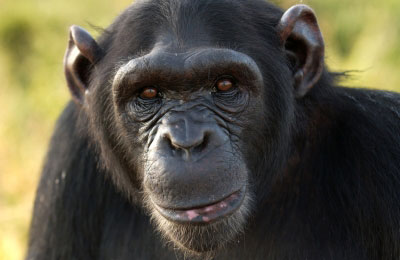 This is the smallest of the Tanzania's national parks and is a fragile remnant of chimpanzee [pan troglodytes] habitat. This park is a place of personalities, Chimps are as individually unique as human beings and no need of scientific expertise is required to distinguish the characteristic difference.
This is the smallest of the Tanzania's national parks and is a fragile remnant of chimpanzee [pan troglodytes] habitat. This park is a place of personalities, Chimps are as individually unique as human beings and no need of scientific expertise is required to distinguish the characteristic difference.
Location: This park is located only 16 km [10 miles] north of Kigoma Town on the shore of Lake Tanganyika [the longest lake in the world about 700 km long] in the western perimeters of Tanzania.
Size: Its about 52 sq. km [around 32 sq.miles]
How to go there: By road, by scheduled or charter flight from Arusha or Dar-es-Salaam or Mwanza or lake ferry from Burundi or Zambia to Kigoma then charter a boat from Kigoma to Gombe which is about 2-3 hours trip.
To do: Trekking on chimpanzee, hiking, swimming/snorkeling, visit the site of Henry Stanley's famous" Dr Livingstone I presume" at Ujuji near Kigoma Town and watch the renowned dhow builders at work.
Best time: Actually chimps don't roam as far in the wet, hence February-June, November-mid December may be easier to find. For better picture opportunities, dry season is the ideal July-October and late December.
|
|
|
|
Mount Kilimanjaro National Park
 The name itself is a mystery, it might mean Mountain of Light; Mountain of Greatness or Mountain of Caravans.[or might not].The indigenous people around this area the [WACHAGGA] don't have a name for the whole massif, only KIPOO [now known as KIBO], for the familiar snowy peak that stands imperious, overseer of the continent, the summit of AFRICA. Rising in absolute isolation at 5,895 meters [19,340 feet a.s.l], Kilimanjaro is the Africa's highest mountain and one of the world's most accessible high summits. Most climbers reach the crater rim with little than a walking stick, proper clothing and determination. Those who reach the UHURU [FREEDOM] POINT, the actual summit, or GILMAN'S POINT on the lip of the crater, will have earned their ascending certificates. And their MEMORIES off-course. But there is more to Kili than her summit. The ascending trip up her slope takes you on a climatic world tour, from the tropics to the arctic. The grassy and cultivated lower slopes turn into lush rainforest, inhabited by the elusive elephants, leopards, buffalos and a variety of antelopes. Higher still, heath and moorland, covered with giant heathers, becomes surreal alpine desert and finally ice, snow and beauty of the top of the continent.
The name itself is a mystery, it might mean Mountain of Light; Mountain of Greatness or Mountain of Caravans.[or might not].The indigenous people around this area the [WACHAGGA] don't have a name for the whole massif, only KIPOO [now known as KIBO], for the familiar snowy peak that stands imperious, overseer of the continent, the summit of AFRICA. Rising in absolute isolation at 5,895 meters [19,340 feet a.s.l], Kilimanjaro is the Africa's highest mountain and one of the world's most accessible high summits. Most climbers reach the crater rim with little than a walking stick, proper clothing and determination. Those who reach the UHURU [FREEDOM] POINT, the actual summit, or GILMAN'S POINT on the lip of the crater, will have earned their ascending certificates. And their MEMORIES off-course. But there is more to Kili than her summit. The ascending trip up her slope takes you on a climatic world tour, from the tropics to the arctic. The grassy and cultivated lower slopes turn into lush rainforest, inhabited by the elusive elephants, leopards, buffalos and a variety of antelopes. Higher still, heath and moorland, covered with giant heathers, becomes surreal alpine desert and finally ice, snow and beauty of the top of the continent.
Location: This park is located in the northern part of Tanzania in the Kilimanjaro Region, and it's about 88 kms from Kilimanjaro International Airport.
Size: This park covers an area of about 755 sq.kms [about 470 sq.miles]
How to go there: 128 kms [about 80 miles] from Arusha Town, and its about one hour drive from the Kilimanjaro Int'l Airport.
To do: Usually six trekking routes to the summit and other more-demanding mountaineering routes. Day and over night hikes to the Shira plateau, and nature trails on the lower reaches of the park.
Best time: The weather is clear and warm from December to February, but also dry and colder from July-September.
|
|
|
|
Mikumi National Park
 Forming the northern border of the Africa's biggest game reserve - the vast SELOUS GAME RESERVE. Mikumi is one of the most Tanzania's popular national parks, the most accessible part of a 75,000 sq.kms - about 47,000 sq.miles wilderness that stretches almost to the shores of the Indian Ocean. Here the lions survey their kingdom, sometimes from a perch high in the trees to keep their feet dry when the rains soak the plain's sticky black soil. The Mikumi ELEPHANTS are more compact than the rest of their Tanzanian cousins, but still a lot bigger than any Land Rover. Bird life is very broad, more than 300 species can be found, as the EURASIAN MIGRANTS seek refuge in Mikumi, joining resident stars like the LILAC BREASTED ROLLER. The park's infrastructure provides visitors with a variety of easy game drives. Hippos inhabit pools 5 kms north of the main gate and zebra, giraffe, hartebeest, and wildebeest accompanying.
Forming the northern border of the Africa's biggest game reserve - the vast SELOUS GAME RESERVE. Mikumi is one of the most Tanzania's popular national parks, the most accessible part of a 75,000 sq.kms - about 47,000 sq.miles wilderness that stretches almost to the shores of the Indian Ocean. Here the lions survey their kingdom, sometimes from a perch high in the trees to keep their feet dry when the rains soak the plain's sticky black soil. The Mikumi ELEPHANTS are more compact than the rest of their Tanzanian cousins, but still a lot bigger than any Land Rover. Bird life is very broad, more than 300 species can be found, as the EURASIAN MIGRANTS seek refuge in Mikumi, joining resident stars like the LILAC BREASTED ROLLER. The park's infrastructure provides visitors with a variety of easy game drives. Hippos inhabit pools 5 kms north of the main gate and zebra, giraffe, hartebeest, and wildebeest accompanying.
Location: This park is located 283 kms - about 175 miles west of Dar-es-Salaam, bordering the Selous Game Reserve in the north and en - route to both Ruaha and Udzungwa Mountains National Parks.
Size: Covering an area of about 3,230 sq.kms - 2,000 sq.miles, forms part of the Selous ecosystem, the world's largest game reserve.
How to go there: This park is accessible by road from Dar-es-Salaam, Ruaha, Udzungwa [during dry season only] or Selous. Charter flight for Dar, Arusha or Selous.By local bus from Dar to the park where game drives can be arranged.
To do: Combine with a visit to nearby Udzungwa, the Selous Game Reserve or continue on to Ruaha.
Best time: All year round.
|
|
|
|
Lake Manyara National Park.
 Held in the glory of its surroundings, underneath the sheer majesty of the Rift Valley wall, Lake Manyara lies calmly, spreading in a heat haze backed by a thin green band of forest and sheer 600 meter red and brown cliffs of the escarpment. The park derives its name from the Maasai word ''manyara'' the name of the plant Euphorbia tirucalli, which the Maasai use to grow livestock stockades. Acacia woodland shelters the park's famous but elusive tree-climbing lions along with squadrons of mongoose feasting on the trails of buffalo and elephant-the most pachyderms per square kilometer in Tanzania. The park hosts 400 varieties of birds, including thousands of red billed quelea, pelicans, cormorants and pink streak of thousands of flamingo on their perpetual migration.
Held in the glory of its surroundings, underneath the sheer majesty of the Rift Valley wall, Lake Manyara lies calmly, spreading in a heat haze backed by a thin green band of forest and sheer 600 meter red and brown cliffs of the escarpment. The park derives its name from the Maasai word ''manyara'' the name of the plant Euphorbia tirucalli, which the Maasai use to grow livestock stockades. Acacia woodland shelters the park's famous but elusive tree-climbing lions along with squadrons of mongoose feasting on the trails of buffalo and elephant-the most pachyderms per square kilometer in Tanzania. The park hosts 400 varieties of birds, including thousands of red billed quelea, pelicans, cormorants and pink streak of thousands of flamingo on their perpetual migration.
Location: This park is located in the northern Tanzania, 126 km [about 80 miles] west of Arusha Town.
Size: The park covers an area of about 330 sq.kms. [205 sq.miles] of which about 200 sq.kms. [125 sq.miles] is covered by Lake Manyara.
How to go there: By road and scheduled flights from Arusha, en-route to Serengeti and Ngorongoro Crater.
To do: Coneing, forest walks on the escarpment. Cultural tours, bike tours and abseilling outside the park
Best time: For large mammal viewing the dry season July -October is the best while for bird watching, waterfalls and conoeing wet season is the best that is November-June.
|
|
|
|
Rubondo National Park
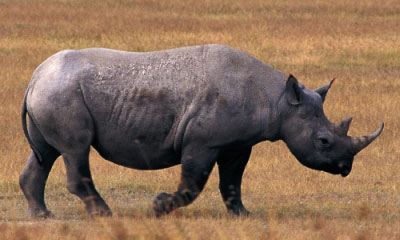 Rubondo Island is tucked in a corner of Lake Victoria the world's second largest lake. Rubondo protects precious fish breeding grounds, the tasty Tilapia and the rapacious Nile perch. Rubondo is more than a waterland where papyrus swamps hosts the secretive Sitatunga, a shaggy aquatic antelope and the dappled bushbuck. Rubondo is home of the malachite kingfisher, the fish eagle and a global stopover for hundreds of migratory birds, number of indigenous mammal species - hippo, bushbuck, monkey, genet and mangoose share their protected habitat with introduced species such as chimps, elephants and giraffes.
Rubondo Island is tucked in a corner of Lake Victoria the world's second largest lake. Rubondo protects precious fish breeding grounds, the tasty Tilapia and the rapacious Nile perch. Rubondo is more than a waterland where papyrus swamps hosts the secretive Sitatunga, a shaggy aquatic antelope and the dappled bushbuck. Rubondo is home of the malachite kingfisher, the fish eagle and a global stopover for hundreds of migratory birds, number of indigenous mammal species - hippo, bushbuck, monkey, genet and mangoose share their protected habitat with introduced species such as chimps, elephants and giraffes.
Location: North of Tanzania, about 150 km [95 miles] west of Mwanza Town.
Size: Covers an area of about 240 sq.kms [150 sq.miles].
How to go there: By regular fights from Arusha, Lake Manyara, Serengeti and Mwanza. By road from Mwanza and then boat transfer.
To do: Walking safaris, boat excursions, sport fishing, chimpanzee treks, plans for conoe trips and kayaking.
Best time: Dry season, June-August. Butterflies and wildflower lovers wet season November-March is the best viewing time.
|
|
|
|
Serengeti National Park
 [Serengeti shall never die] A million wildebeest... each day driven by the same ancient rhythm, fulfilling their instinctive role in the inescapable cycle of life, a frenzied three weeks bout of territorial conquests and mating, survival of the fittest a the 40 kms long columns plunge through crocks infested Grumet River on the annual exodus north, replenishing the species in a brief population explosion that produces more than 8,000 calves a day before the 1,000 kms pilgrimage begins again. More than 6 million hooves pound the legendary plains of the Serengeti [end less plains in MAASAI language]. The exodus triggered by the rains, more than a million wildebeest, 200,000 zebra and 300,000 Thomson's gazelle congregate to under take the long trek to new pasturing lands. Serengeti is the first and most famous national park, renowned for its wealth of lions and leopards. The vast reaches of this provides a protected breeding ground for the vulnerable cheetah, help the rhino fight extinction. See and witness predator versus the prey and the fundamental interdependence of the Serengeti's abundant species, the large amounts of bird species more than 500 varieties and more than 100 types of dung beetle. In actual fact the Serengeti is a sense of seeing to the ends of the earth, the over sunburn savannah shimmering to the horizon. Yet, after the rains this golden horizon is magically transformed into an endless green carpet flecked with wildflowers. But there are also wooded hills, towering termite mounds and rocky Kopjes, rivers lined with elegant stands of fig trees, ebony and acacia stained orange with dust.
[Serengeti shall never die] A million wildebeest... each day driven by the same ancient rhythm, fulfilling their instinctive role in the inescapable cycle of life, a frenzied three weeks bout of territorial conquests and mating, survival of the fittest a the 40 kms long columns plunge through crocks infested Grumet River on the annual exodus north, replenishing the species in a brief population explosion that produces more than 8,000 calves a day before the 1,000 kms pilgrimage begins again. More than 6 million hooves pound the legendary plains of the Serengeti [end less plains in MAASAI language]. The exodus triggered by the rains, more than a million wildebeest, 200,000 zebra and 300,000 Thomson's gazelle congregate to under take the long trek to new pasturing lands. Serengeti is the first and most famous national park, renowned for its wealth of lions and leopards. The vast reaches of this provides a protected breeding ground for the vulnerable cheetah, help the rhino fight extinction. See and witness predator versus the prey and the fundamental interdependence of the Serengeti's abundant species, the large amounts of bird species more than 500 varieties and more than 100 types of dung beetle. In actual fact the Serengeti is a sense of seeing to the ends of the earth, the over sunburn savannah shimmering to the horizon. Yet, after the rains this golden horizon is magically transformed into an endless green carpet flecked with wildflowers. But there are also wooded hills, towering termite mounds and rocky Kopjes, rivers lined with elegant stands of fig trees, ebony and acacia stained orange with dust.
Location: This huge park is located 335 kms - about 208 miles from Arusha, stretching north to Kenya and bordering Lake Victoria to the west.
Size: This park covers a total of 14,763 sq.kms - about 9,000 sq. miles.
How to go there: Charter flights from Arusha, Lake Manyara and Mwanza. Drive from Arusha, Lake Manyara, Tarangire or Ngorongoro Crater.
To do: Hot air balloon safaris, Maasai rock paintings and musical rocks. Visit neighboring Ngorongoro Crater, Olduvai Gorge, Ol Doinyo Lengai Volcano and the Lake Natron's flamingos.
Best time: To follow the wildebeest migration, the bet time is from December -July. To see predators the best time is from June-October.
|
|
|
|
Ngorongoro Conservation area
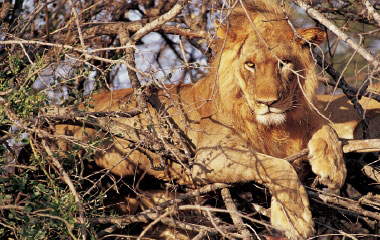 Ngorongoro is famous around the globe as an echo of Eden. It is a 19 kms - 12 miles wide unbroken volcanic crater [caldera] ringed with towering walls of up to 600 meters and sheltering forests, grasslands, fresh springs large lake and a dazzling abundance of animals of all sorts. Archaeologists will be interested in OLDUPAI GORGE which is in the Conservation Area and where it is possible to see the famous discoveries of the remains of the early handy-man [Hormo habilis] by Mary and Louis Leaky. There are 25,000 larger animals within the crater itself, mostly zebra and wildebeest. It is undoubtedly the best place to see BLACK RHINO [Diceros bicornis]. More than 100 species of bird not found in the Serengeti have been found in the crater. Other game: leopard, cheetah, hyena, elephants [strangely all males], impala, warthog, buffalo, eland and lots of antelope family and smaller mammals of sorts.
Ngorongoro is famous around the globe as an echo of Eden. It is a 19 kms - 12 miles wide unbroken volcanic crater [caldera] ringed with towering walls of up to 600 meters and sheltering forests, grasslands, fresh springs large lake and a dazzling abundance of animals of all sorts. Archaeologists will be interested in OLDUPAI GORGE which is in the Conservation Area and where it is possible to see the famous discoveries of the remains of the early handy-man [Hormo habilis] by Mary and Louis Leaky. There are 25,000 larger animals within the crater itself, mostly zebra and wildebeest. It is undoubtedly the best place to see BLACK RHINO [Diceros bicornis]. More than 100 species of bird not found in the Serengeti have been found in the crater. Other game: leopard, cheetah, hyena, elephants [strangely all males], impala, warthog, buffalo, eland and lots of antelope family and smaller mammals of sorts.
Location: Ngorongoro is located 190 kms west of Arusha Town between the Serengeti and Lake Manyara National Parks.
Size: This park covers an area of about 8,300 sq.kms and a diameter of 19 kms, with the crater covering about 260 sq.kms and walls towering up to 610 meters.
How to go there: By charter flight from Arusha, by road from Arusha Town aboard 4 WD vehicles, by local transport to Karatu Town and then connect to the park by an authorized agent transport.
To do: Full day crater tours, honey moon trips, bird watching, photographic safaris, walking safaris.
Best time: January - March and July - December.
|
Ngorongoro Conservation Tour |
|
|
|
|
Olduvai Gorge
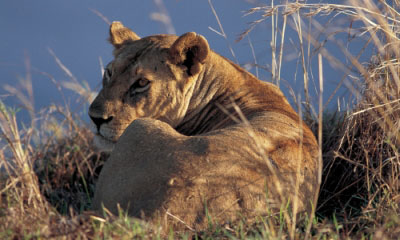 Located within the Ngorongoro Conservation Area is the Olduvai Gorge, 180 km from Arusha. It was here that Dr. Louis Leakey discovered the remains of Homo hablis or "Handy man" regarded as mankind's first step on the ladder of human evolution. But many more fossils have been discovered here including those of prehistoric elephants, giant horned sheet and enormous ostriches. Guides operates lecture tours of the sites.
Located within the Ngorongoro Conservation Area is the Olduvai Gorge, 180 km from Arusha. It was here that Dr. Louis Leakey discovered the remains of Homo hablis or "Handy man" regarded as mankind's first step on the ladder of human evolution. But many more fossils have been discovered here including those of prehistoric elephants, giant horned sheet and enormous ostriches. Guides operates lecture tours of the sites.
|
|
|
|
Lake Victoria
 The source of Nile eluded 19th century explorers, but today's tourists can easily view the waters that supply it, Lake Victoria. It is the largest lake in Africa and the second largest fresh water lake in the world. It is home to the lungfish a unique fish type that dates back 300 million years, which can breathe air in to its swim bladder, which then act as a primitive pair of lungs. Scenically beautiful, Lake Victoria also has great numbers of fish, the most successful commercial variety being Tilapia.
The source of Nile eluded 19th century explorers, but today's tourists can easily view the waters that supply it, Lake Victoria. It is the largest lake in Africa and the second largest fresh water lake in the world. It is home to the lungfish a unique fish type that dates back 300 million years, which can breathe air in to its swim bladder, which then act as a primitive pair of lungs. Scenically beautiful, Lake Victoria also has great numbers of fish, the most successful commercial variety being Tilapia.
|
|
|
|
Selous Game Reserve - South Tanzania
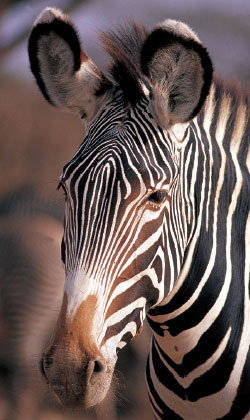 The Selous Game Reserve is the largest protected wildlife area in Africa. UN World Heritage site, this pristine, uninhabited area is larger than Switzerland. Only in the Serengeti will visitors see a greater concentration of wildlife. Yet Selous boasts Tanzania's largest population of elephants as well as large numbers of buffalo, hippo and wild dog. Other spicies commonly seen are lion, bushbuck, impala, giraffe, eland, baboon, zebra and greater kudu. The topography of the park varies from rolling savannah, woodland, grassland plains and rocky outcrops cut by the Rufiji River and its tributaries, the Kilombero and Lumegu, which together cover the greatest catchments area in Eastern Africa. The Rufiji which flows from north to south, provides the life-blood of the Selous and sailing or rafting down the river is a superb method of seeing game, especially during the dry season between June and October.
The Selous Game Reserve is the largest protected wildlife area in Africa. UN World Heritage site, this pristine, uninhabited area is larger than Switzerland. Only in the Serengeti will visitors see a greater concentration of wildlife. Yet Selous boasts Tanzania's largest population of elephants as well as large numbers of buffalo, hippo and wild dog. Other spicies commonly seen are lion, bushbuck, impala, giraffe, eland, baboon, zebra and greater kudu. The topography of the park varies from rolling savannah, woodland, grassland plains and rocky outcrops cut by the Rufiji River and its tributaries, the Kilombero and Lumegu, which together cover the greatest catchments area in Eastern Africa. The Rufiji which flows from north to south, provides the life-blood of the Selous and sailing or rafting down the river is a superb method of seeing game, especially during the dry season between June and October.
|
|
|
|
Katavi National Park - Western Tanzania
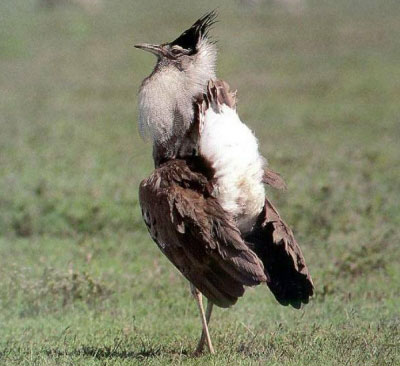 Katavi National Park lies south of Mahale mountains on a high flood plain surrounding Lake Katavi. It is one of the most difficult Parks to reach and is strictly for those of an adventurous spirit, but it has excellent game viewing with a real wilderness atmosphere. July to October are the best months to visit the park. The water of the park shelters crodile, hippo and large flocks of pelicans. The diverse woodland, acacia bush, lakes and swamps have atracted over 400 spicies of birds.
Katavi National Park lies south of Mahale mountains on a high flood plain surrounding Lake Katavi. It is one of the most difficult Parks to reach and is strictly for those of an adventurous spirit, but it has excellent game viewing with a real wilderness atmosphere. July to October are the best months to visit the park. The water of the park shelters crodile, hippo and large flocks of pelicans. The diverse woodland, acacia bush, lakes and swamps have atracted over 400 spicies of birds.
|
|
|
|
Lake Nyasa - South Tanzania
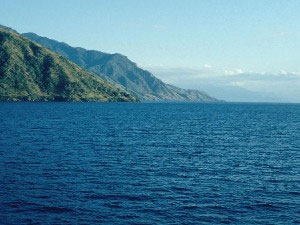 lake Nyasa is the most southerly of the Rift Valley lakes and is also, biologically the most diverse. The northern shores are home to the Nyakusa people whose huts villages have remained unchanged for centuries. The Kisi tribe another Nyasa tribe are famous for their pottery. The lake contains 30 % of the world's cichlid species - colourful fish easily observed in the clear water.
lake Nyasa is the most southerly of the Rift Valley lakes and is also, biologically the most diverse. The northern shores are home to the Nyakusa people whose huts villages have remained unchanged for centuries. The Kisi tribe another Nyasa tribe are famous for their pottery. The lake contains 30 % of the world's cichlid species - colourful fish easily observed in the clear water.
|
|
|
|
Lake Tanganika - West Tanzania
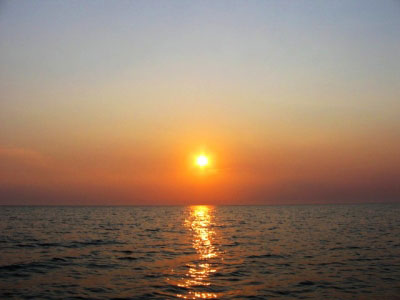 The waters of lake Tanganika, the longest (677 km) and second deepest (1433 m) fresh water lake in the world, contains one of the richest concentration of fish found anywhere. More than 250 species live withing it. It is worth staying up on a moonless night to watch the local fisherman on the lake, who attract their catch by suspending lights over the bows of their boats.
The waters of lake Tanganika, the longest (677 km) and second deepest (1433 m) fresh water lake in the world, contains one of the richest concentration of fish found anywhere. More than 250 species live withing it. It is worth staying up on a moonless night to watch the local fisherman on the lake, who attract their catch by suspending lights over the bows of their boats.
|
|
|
|
Stone Town - Zanzibar
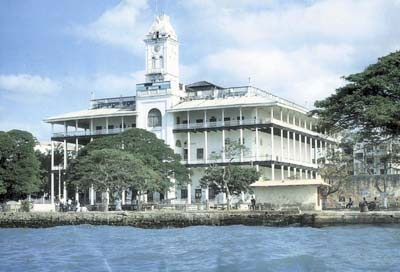 It may not have a particularly romantic name, but Stone Town is the old city and cultural heart of Zanzibar, little changed in the last 200 years. It is a place of winding alleys, bustling bazaars, mosques and grand Arab houses whose original owners vied with each other over the extravagance of their dwellings. This one-upmanship is particularly reflected in the brass-studded, carved, wooden doors - there are more than 500 different examples of this handiwork. You can spend many idle hours and days just wandering through the fascinating labyrinth of narrow streets and alleyways.
It may not have a particularly romantic name, but Stone Town is the old city and cultural heart of Zanzibar, little changed in the last 200 years. It is a place of winding alleys, bustling bazaars, mosques and grand Arab houses whose original owners vied with each other over the extravagance of their dwellings. This one-upmanship is particularly reflected in the brass-studded, carved, wooden doors - there are more than 500 different examples of this handiwork. You can spend many idle hours and days just wandering through the fascinating labyrinth of narrow streets and alleyways.
|
|
|
|
Paradise Beaches - Zanzibar
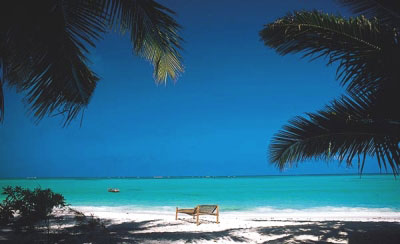 Zanzibar's brilliant white beaches lapped by the warm turquoise waters of the Indian Ocean provide the perfect place to relax, soak up the sun and take a break from some busy sightseeing. The beaches in Zanzibar are a paradise, interspersed with picturesque fishing villages, where the people live a simple way of life, unchanged over the years. There are more than 25 fantastic beaches in Zanzibar, and some are so peaceful and remote that the only noise breaking the silence is likely to be the ocean.
Zanzibar's brilliant white beaches lapped by the warm turquoise waters of the Indian Ocean provide the perfect place to relax, soak up the sun and take a break from some busy sightseeing. The beaches in Zanzibar are a paradise, interspersed with picturesque fishing villages, where the people live a simple way of life, unchanged over the years. There are more than 25 fantastic beaches in Zanzibar, and some are so peaceful and remote that the only noise breaking the silence is likely to be the ocean.
|
Paradise Beaches Tour (Zanzibar) |
|
|
|
|
Mafia and Pemba Islands
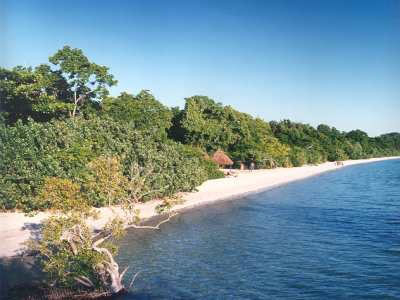 MAFIA ISLAND: A 40 minutes flight south of Dar es Salaam is one of the most exiting big game fishing and diving areas in the world, Mafia Island. Sports fishermen flock here for the superb catches, many of the fish are great fighters. They include marlin, sailfish, shark, tuna, kingfish, barracuda, snapper, horse mackerel, wahoo and huge cod. The main season is from September to March although fishing is possible all year around within the reef and channel.
MAFIA ISLAND: A 40 minutes flight south of Dar es Salaam is one of the most exiting big game fishing and diving areas in the world, Mafia Island. Sports fishermen flock here for the superb catches, many of the fish are great fighters. They include marlin, sailfish, shark, tuna, kingfish, barracuda, snapper, horse mackerel, wahoo and huge cod. The main season is from September to March although fishing is possible all year around within the reef and channel.
PEMBA ISLAND - 50 km north of Zanzibar is the highly fertile Pemba Island which although smaller than Zanzibar, grows three times as many cloves. The Pemba chennel which runs between the mainland and the island offers the best game fishing in the world. The Island also boasts some excellent beaches.
|
Mafia & Pemba Islands Tour |
|
|
|
|
|